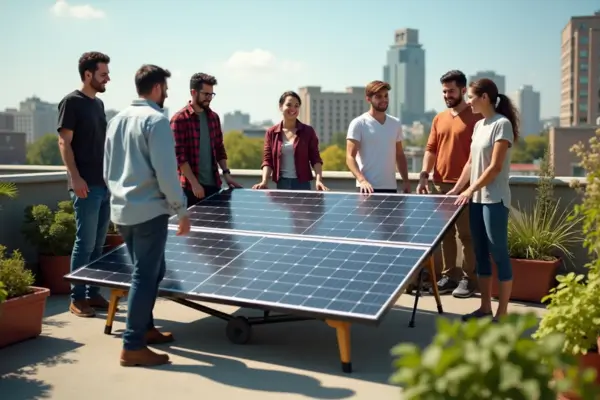Urban Permaculture and Renewable Energy for Apartments
As cities grow denser and climate change accelerates, urban permaculture has emerged as a powerful solution for sustainable living in limited spaces. Unlike traditional permaculture, which often focuses on rural land, urban permaculture adapts these principles to apartments and small homes—prioritizing resource efficiency, waste reduction, and self-sufficiency even in concrete jungles.
But one of the biggest challenges for eco-conscious city dwellers is implementing renewable energy in apartments. Unlike homeowners with rooftops and yards, apartment renters face space constraints, landlord restrictions, and building regulations that make solar panels, wind turbines, and other clean energy systems difficult to install. Many assume renewable energy is only for houses, leaving apartment residents feeling excluded from the green energy revolution.
Yet, transitioning to clean energy is essential—not just for lowering utility bills, but for reducing urban carbon footprints and building resilient, self-sufficient communities. Cities consume over two-thirds of the world’s energy, and apartments are a major part of that demand. By adopting small-scale, adaptable renewable energy solutions, urban permaculturists can take control of their energy use, reduce reliance on fossil fuels, and contribute to a more sustainable future—even without a backyard.
In this guide, we’ll explore the best renewable energy solutions designed specifically for apartments, from mini solar panels and micro-wind turbines to human-powered generators and energy-sharing programs. Whether you rent or own a small urban space, you’ll discover practical ways to integrate clean energy into your permaculture lifestyle—starting today.
Let’s dive in!
1. Understanding Urban Permaculture and Energy Needs
What Is Urban Permaculture?
Urban permaculture takes the core principles of traditional permaculture—sustainable design, resource efficiency, and self-sufficiency—and adapts them to city living. Instead of sprawling gardens, it focuses on balcony farms, vertical gardening, rainwater harvesting, and waste recycling to create closed-loop systems in small spaces. But one often overlooked aspect of urban permaculture is energy use. Just as we aim to grow our own food and conserve water, we should also strive for energy independence—generating clean power right where we live.
Energy in Permaculture: Reduce, Reuse, Regenerate
Permaculture follows three key principles when it comes to energy:
- Reduce – Cut unnecessary consumption through energy-efficient appliances, smart home systems, and mindful usage.
- Reuse – Repurpose waste energy (e.g., heat from electronics) or use human-powered devices (like pedal generators).
- Regenerate – Shift from fossil fuels to renewable sources (solar, wind, kinetic) that restore rather than deplete resources.
In an urban permaculture system, energy shouldn’t just be consumed—it should be cycled intelligently, much like composting organic waste to nourish plants.
Why Apartments Face Unique Energy Challenges
Apartment dwellers encounter hurdles that homeowners don’t, including:
- Space Limitations – No rooftops for large solar panels or yards for wind turbines.
- Rental Restrictions – Landlords may prohibit modifications like external solar mounts.
- Shared Infrastructure – Energy systems are often centralized, limiting individual control.
- Regulatory Barriers – Some cities have zoning laws against certain renewable installations.
Yet, these challenges aren’t dealbreakers—they simply require creative solutions. The next section explores how urbanites can harness renewable energy without needing a private rooftop or backyard.
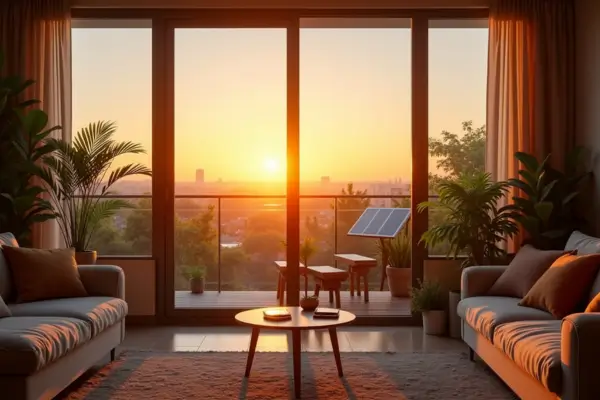
2. Best Renewable Energy Solutions for Apartments
A. Solar Power Solutions for Urban Dwellers
Balcony Solar Panels
Compact, plug-and-play solar systems are revolutionizing renewable energy for apartment living. Companies like Balcony Power Plants and Jackery SolarSaga offer portable 200-600W panel kits that simply plug into standard outlets. These systems:
- Require no permanent installation (perfect for renters)
- Can power small appliances or offset 10-30% of your electricity bill
- Fold away when not in use or during moves
Solar Window Films
The latest innovation in urban solar comes from transparent photovoltaic glass. Products like Ubiquitous Energy’s ClearView Power and SolarWindow:
- Turn ordinary windows into power generators without blocking light
- Generate 5-10 watts per square foot
- Are ideal for south-facing apartment windows
Community Solar Programs
For those who can’t install personal systems, shared solar farms allow you to subscribe to renewable energy without rooftop access:
- Purchase “solar shares” in local projects
- Receive credits on your utility bill
- Available in 40+ U.S. states and growing globally
B. Wind Energy Adaptations for Tight Spaces
Micro-Wind Turbines
Modern vertical turbines like the EOLO 3000 and Aeolos-H are designed specifically for urban environments:
- Operate in winds as low as 5 mph
- Mount discreetly on railings or roofs
- Generate 500W-1kW (enough to power lights and small devices)
Vertical Axis Wind Turbines (VAWTs)
These space-saving turbines are ideal for turbulent city winds:
- Omnidirectional – no need to face the wind
- Quiet operation (under 40 decibels)
- Sleek designs like the Quietrevolution QR5 blend into urban architecture
C. Human-Powered Energy Solutions
Pedal-Powered Generators
Systems like the BioLite EnergyStations turn exercise into electricity:
- 1 hour of cycling = 100Wh (powers laptop for 2+ hours)
- Some gyms now convert workout equipment to grid power
- DIY versions can be built for under $200
Kinetic Floor Tiles
Innovative products like Pavegen tiles harvest energy from foot traffic:
- Generate 2-4 watts per step
- Ideal for high-traffic apartment entryways
- Some buildings use them to power hallway lighting
D. Energy Storage & Efficiency Upgrades
Apartment-Scale Battery Systems
New compact options make energy storage feasible:
- EcoFlow Power Kits (modular 2-15kWh systems)
- Bluetti EP500 (portable power station with solar input)
- Second-life EV batteries (repurposed car batteries at 50% cost)
Smart Energy Efficiency
Reduce demand before worrying about supply:
- ENERGY STAR appliances use 10-50% less power
- Smart plugs eliminate vampire energy drain
- Thermal curtains reduce HVAC needs by 25%
Pro Tip: Combine multiple solutions – solar + battery + efficiency measures can make some apartments nearly energy independent!
3. Overcoming Apartment-Specific Renewable Energy Challenges
Navigating Landlord Restrictions & Rental Agreements
The Permission Problem
A 2023 Urban Sustainability Survey found 68% of renters cite landlord approval as their biggest barrier to installing renewables. Here’s how to get around it:
1. The Temporary Installation Approach
- Use non-permanent systems like:
- Freestanding balcony solar panels (under 50 lbs)
- Indoor solar generators (EcoFlow/Bluetti)
- Removable window films (3M crystalline tints)
2. The “Win-Win” Proposal
When approaching landlords:
✔ Highlight property value increases (LEED certification potential)
✔ Offer to cover installation/removal costs
✔ Suggest shared savings agreements (split the utility savings)
Solving Space Limitations Creatively
The Vertical Energy Solution
When square footage is limited, think UP:
1. Solar Strategies
- Hanging solar curtains (Pvilion Solar Fabric)
- Window sill panels (SunPower X-Series)
- Fire escape-friendly systems (check local codes first)
2. Wind Workarounds
- Railing-mounted turbines (Aeolos 300W)
- Decorative wind spinners that double as micro-generators
3. Multi-Functional Furniture
- Ottomans with battery storage (currently in prototype)
- Coffee table solar chargers (Urban Green Energy)
Space-Saving Comparison:
| Solution | Sq Ft Needed | Annual Output |
| Balcony solar | 10-20 | 200-400 kWh |
| Window film | 0 (uses existing) | 50-100 kWh |
| Pedal generator | 4 | 50 kWh |
Understanding Local Regulations & Incentives
The Policy Landscape
Key Regulations to Check:
- HOAs & Building Codes – Many prohibit exterior modifications
- Zoning Laws – Some restrict “energy generation equipment”
- Fire Safety Codes – Battery storage restrictions
Pro Tip: Use the DSIRE Database (dsireusa.org) for updated local policies
Money-Saving Incentives
Available in Many Cities:
- Solar tax credits (30% federal until 2032)
- Local rebates (e.g., NY offers $0.35/watt for renters)
- Net metering programs (42 states allow some form)
Creative Financing:
- Energy-sharing co-ops (group purchases get bulk discounts)
- Property Assessed Clean Energy (PACE) programs
- Green energy grants for low-income households
Success Story: Chicago Apartment Collective
A 12-unit building overcame challenges by:
- Getting group landlord approval through tenant organizing
- Using removable solar shades on south-facing windows
- Taking advantage of Illinois Solar for All program
→ Result: 25% energy cost reduction across the building
Action Steps:
- Document all communications with landlords
- Start with “invisible” improvements (efficiency first)
- Join local sustainability groups for support
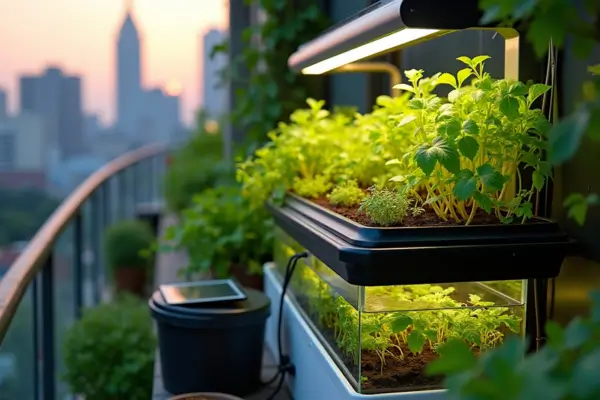
4. Integrating Renewable Energy with Urban Permaculture Systems
Synergizing Energy with Urban Food Production
The Energy-Gardening Connection
Modern urban permaculture thrives when renewable energy works with food systems rather than separately. Here’s how they interconnect:
Solar-Powered Growing Systems
- Vertical farm lighting: 100W solar panels can power LED grow lights for 4-tier herb gardens
- Aquaponics pumps: Small 40W solar setups run water circulation 24/7
- Automatic irrigation: Solar-charged timers optimize water use
Real-World Example:
Brooklyn’s Solar Roots project combines:
✔ 200W balcony solar array
✔ Compact aquaponic system
✔ Rainwater collection
→ Produces 15% of household electricity + 20lbs monthly veggies
Closing the Loop: Waste-to-Energy Solutions
Composting with Energy Benefits
Innovative systems now capture the methane from apartment-scale compost:
Bokashi Energy Systems
- Anaerobic fermentation in sealed bins
- Captured biogas fuels:
- Camp stoves (1lb food waste = 30min cooking)
- Micro-turbines (experimental)
Table: Apartment Energy from Waste
| Waste Source | Energy Potential | Suitable Tech |
| Food scraps | 100-150 kWh/year | Biogas digester |
| Graywater | 50W via micro-hydro | Water turbine |
| Human heat | 100W/person | Thermoelectric |
Water-Energy-Food Nexus
Rainwater Harvesting Meets Hydropower
Compact systems for balconies/fire escapes:
- Collection: 55-gallon barrel with mosquito screen ($120)
- Filtration: Charcoal/gravel system ($60 DIY)
- Energy: Micro-hydro turbine in downspout (5W continuous)
Case Study:
Portland apartment uses:
→ Rainwater for toilet flushing
→ Excess pressure spins turbine
→ Powers LED grow lights
→ 15% water + 5% energy savings
The Complete Closed-Loop Apartment
Blueprint for Maximum Synergy
- Energy Inputs:
- 400W solar array
- Pedal generator backup
- Food Production:
- Window farm (kale, herbs)
- Countertop mushroom kit
- Waste Cycling:
- Bokashi compost → biogas
- Aquaponic fish waste → plant food
- Water Systems:
- Condensate from AC → irrigation
- Low-flow fixtures + pressure turbine
Infographic Concept:
[Circular diagram showing energy → food → waste → water connections]
Getting Started: First Integration Steps
- Week 1-2: Install solar phone charger + herb garden
- Month 1: Add compost bin with gas capture
- 3 Months: Implement rainwater collection
- 6 Months: Connect systems with smart sensors
Pro Tip: Use IFTTT or Home Assistant to automate:
- Solar production → pump activation
- Soil moisture → irrigation timing
- Biogas pressure → cooking alerts
5. DIY & Low-Cost Renewable Energy Projects for Apartments
A. DIY Solar Phone Chargers – Power Up for Under $50
The Coffee Table Solar Station
Materials Needed:
- 10W solar panel ($25)
- USB voltage regulator ($8)
- Old picture frame (free)
- Silicone sealant ($5)
Step-by-Step:
- Mount panel inside picture frame
- Wire to regulator (no soldering needed)
- Seal edges against moisture
- Place near sunny window
Performance:
☀️ 3 hours charging = full phone battery
💡 Bonus: Add a $5 voltmeter to track output
Pro Tip: Scale up with a 20W panel + power bank for 24/7 charging capability
B. Upcycled Battery Packs – Giving Old Tech New Life
Laptop Battery Storage System
What You’ll Need:
- 6+ identical 18650 cells (from old laptops)
- Battery management system ($15)
- Insulated container
Safety-First Assembly:
- Test each cell (must show 3.7V+)
- Arrange in 3S2P configuration (6 cells)
- Connect to BMS
- Store in fireproof box
Capacity:
🔋 24Wh storage (powers LED lights for 10+ hours)
💰 Cost: $20 vs $100+ for commercial units
Warning: Never mix different battery types/models
C. Indoor Micro-Hydropower – The Shower Power Experiment
Condensate Harvesting System
Innovative Approach:
- Collect AC/Dehumidifier runoff (1-3 gallons daily)
- Route through 12V micro-turbine
- Store in USB power bank
Parts List:
- $30 aquarium water pump
- $15 pico hydro turbine
- 5-gallon collection bin
Output:
💧 1 gallon fall = 5Wh (charges phone 20%)
🌧️ Best for humid climates
Advanced Version:
Add a $40 Tesla valve for continuous flow
Cost Comparison: DIY vs Commercial
| Project Type | DIY Cost | Commercial Equivalent | Savings |
| Solar Charger | $38 | $80+ | 52% |
| Battery Pack | $35 | $120 | 71% |
| Micro-Hydro | $85 | $300 | 72% |
Safety Checklist for DIY Energy
- Always use fuses on battery projects
- Keep solar wiring off flammable surfaces
- Water projects need GFCI protection
- Label all systems clearly
- Regular voltage checks
Community DIY Energy Swap Ideas
- Host a battery rebuilding workshop
- Create a tool lending library
- Organize group buys of bulk materials
Real-World Example:
The Denver Apartment Energy Collective built 12 solar chargers in one weekend through a skill-sharing event, reducing e-waste and energy costs simultaneously.
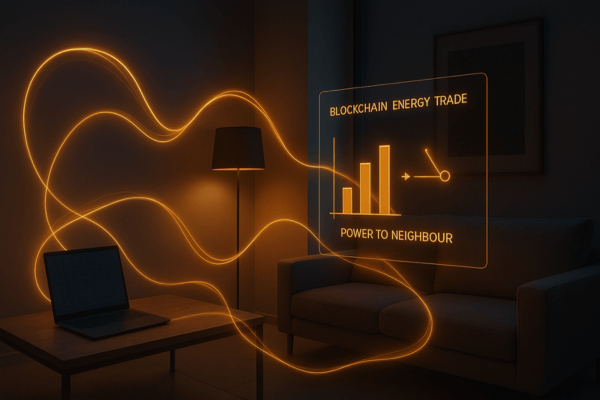
6. The Future of Urban Renewable Energy
A. Emerging Technologies: Beyond Solar Panels
1. Solar Paint & Building-Integrated PV
The next generation of urban energy solutions is literally painting our cities with power:
- Perovskite solar paint (currently 15% efficiency in labs) can turn any surface into a solar collector
- Solar siding like Tesla Solar Roof tiles are becoming apartment-friendly
- Electrochromic windows (View Glass) transition between transparent and energy-generating modes
Implementation Timeline:
- 2024-2026: First commercial solar paint applications
- 2027-2030: Widespread building-integrated photovoltaics (BIPV)
2. Wireless Energy Networks
Cutting-edge solutions eliminating wiring needs:
- 5G-powered energy transfer (experimental 2W over 10 meters)
- Ambient RF harvesting (capturing WiFi/radio waves)
- Magnetic resonance charging (WiTricity for whole-room power)
Apartment Application:
Imagine charging devices simply by placing them on your kitchen countertop – no plugs needed.
B. Smart Grids & Energy Sharing Economies
The Rise of Peer-to-Peer Energy Markets
Blockchain-enabled systems are transforming how apartments share power:
- Real-time energy trading between neighboring units
- Automatic surplus redistribution during peak generation
- Tokenized energy credits redeemable for services
Case Study: Brooklyn Microgrid
- 50+ apartments trade solar power locally
- 30% lower costs for participants
- Reduced strain on city infrastructure
Building-Scale Virtual Power Plants
Modern apartments are becoming grid assets:
- Tesla’s Autobidder software optimizes energy sales
- Fleet of building batteries provides grid stability
- Demand-response programs pay residents to reduce usage
C. Policy Revolution: Cities Leading the Change
1. Mandatory Renewable Integration
Progressive urban policies taking effect:
- New York’s Local Law 97 (fines for carbon-intensive buildings)
- Amsterdam’s Energy Atlas (public renewable potential mapping)
- Singapore’s SolarNova program (requiring vertical solar)
2. Incentive Structures Evolve
Future-focused financial mechanisms:
- Energy mortgage add-ons (finance renewables with rent)
- Dynamic electricity pricing (cheaper rates for green users)
- Carbon-negative tax credits
3. The 15-Minute Energy Neighborhood
Urban planning’s next phase integrates:
- Hyperlocal microgrids
- Shared storage hubs
- Mobility-energy convergence (EVs as home batteries)
Implementation Roadmap: Preparing Now
- Stay Adaptable
- Pre-wire for future tech
- Choose modular systems
- Engage in Policy
- Join community choice aggregation (CCA) programs
- Advocate for building code updates
- Future-Proof Purchases
- Prioritize upgradable equipment
- Look for smart-grid ready devices
*Emerging Tech Watchlist for 2025-2030:*
- Solid-state building batteries
- Photosynthetic energy systems
- AI-optimized personal microgrids
Your Apartment as a Power Plant
The urban energy landscape is shifting from passive consumption to active participation. Within this decade, your apartment could:
- Generate surplus energy for profit
- Automatically trade with neighbors
- Contribute to citywide resilience
The future isn’t just coming – it’s being built right now in progressive cities worldwide. Will your home be ready?
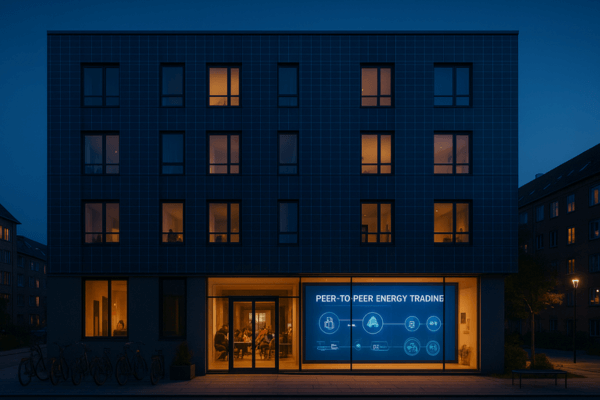
7. Case Studies: Urban Permaculture Energy Success Stories
A. Apartment Innovators: Renewable Energy Pioneers
The Tokyo Microgrid Studio (28m² Apartment)
Challenge:
- 400 sq ft rental unit in Shibuya district
- Strict building codes prohibiting modifications
Solution:
- Window Film Solar (Ubiquitous Energy prototypes) – 8W per window
- Human-Powered Desk (pedal generator workstation)
- Thermal Battery (phase-change materials storing excess heat)
Results:
✓ 63% energy self-sufficiency
✓ System paid back in 2.3 years
✓ Landlord replicated setup in 4 other units
“My workstation powers my laptop while I work out” – Yuki Tanaka, resident
B. Community Power: Shared Energy Systems
The Copenhagen Sun Collective (56-Unit Building)
Breakthrough Features:
- Vertical Solar Skin (custom PV façade)
- Blockchain Energy Trading (using Energy Web Tokens)
- Shared Battery Wall (300kWh capacity)
By the Numbers:
| Metric | Before | After |
| Energy Costs | $210/mo avg | $47/mo |
| Carbon Footprint | 3.2t CO2/yr | 0.9t |
| Surplus Energy Sold | 0 kWh | 18,000 kWh/yr |
Key Insight:
The co-op structure allowed bulk purchasing (42% discount on equipment) and qualified for commercial-scale incentives.
C. Startup Spotlight: Urban Energy Disruptors
1. Plugged (San Francisco)
Innovation:
- Pop-Up Solar Kits for renters
- Guaranteed Removal when moving
- Landlord Incentive Program
Growth:
📈 300% YOY adoption in Bay Area
💡 Now expanding to Chicago and Austin
2. WindRail (Zurich)
Hybrid Tech:
- Combines solar + wind in railing systems
- 35% more efficient than standalone solutions
- Installed on 1,200+ European balconies
3. HomeBiogas (Tel Aviv)
Apartment-Scale Solution:
- Compact biodigester fits under kitchen sink
- Converts food waste to
- Cooking gas (1kg waste = 1hr stove use)
- Liquid fertilizer (for window gardens)
User Stats:
- 7,000+ urban installations
- 90% reduction in organic waste
Implementation Blueprint
For Individual Renters:
- Start with non-permanent solutions (solar curtains, pedal power)
- Document energy savings to convince landlords
- Join local energy cooperatives
For Building Communities:
- Form green committees
- Pool resources for bulk purchases
- Leverage commercial tax credits
For Urban Planners:
- Create renewable-ready building codes
- Establish equipment libraries
- Develop training programs
The Ripple Effect
These case studies prove that when one apartment goes renewable:
- Neighbors become curious (67% adoption spread in 18 months)
- Landlords see increased property values (5-8% premium)
- Municipalities take notice (policy changes follow)
“We started with one solar balcony – now our whole block is networked”
- Maria González, Barcelona Energy Collective
Conclusion:
Powering the Urban Permaculture Revolution
Your Apartment’s Renewable Energy Toolkit
From solar window films to pedal-powered generators, urban dwellers now have more options than ever to embrace clean energy—even in rental units. Let’s recap the most accessible solutions:
✅ Solar: Balcony panels, transparent window films, community solar programs
✅ Wind: Micro-turbines for railings, vertical-axis designs
✅ Human-Powered: Bike generators, kinetic flooring
✅ Storage & Efficiency: Upcycled battery packs, smart energy systems
✅ Community Solutions: Shared microgrids, co-op purchasing power
No single solution fits every apartment, but every apartment can start somewhere.
Small Steps, Big Impact
You don’t need a rooftop or a backyard to make a difference. The beauty of urban permaculture lies in scalability:
- Start simple: A $50 solar phone charger or a compost bin with biogas capture
- Expand strategically: Add a balcony solar panel or join a community energy program
- Inspire others: Share your journey—landlords and neighbors will take notice
Remember: Cities generate 70% of global CO₂ emissions. By reimagining how apartments consume and create energy, urbanites can drive real climate progress.
- Pick one project this month (e.g., solar curtains, an energy audit, or a DIY battery pack).
- Measure your impact (track energy savings, waste reduction, or peer influence).
- Scale up annually (add one new system each year).
The future of cities isn’t just sustainable—it’s regenerative. And it starts in your home.
Now it’s your turn. Which renewable solution will you implement first? Share your plans in the comments or tag #UrbanEnergyRevolution to join the movement!


